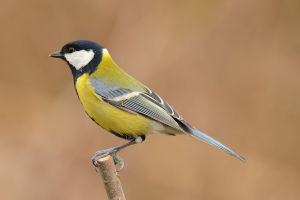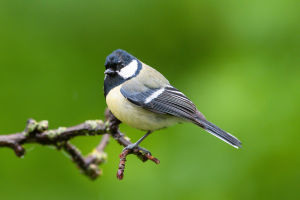In the afternoon, when the sun shines through the leaves, hummingbirds quietly arrive, becoming some of the most agile little creatures in nature.
These tiny birds attract everyone's attention with their unique charm. The name "hummingbird" comes from the buzzing sound made by their wings as they vibrate, which seems to accompany their graceful dance.
Compared to other birds, hummingbirds possess incredible flying abilities. They can hover in mid-air and even fly upside down. This skill undoubtedly makes them unique among avian species.
There are many species of hummingbirds, with around 300 species worldwide, primarily distributed in the tropical and subtropical regions of the Americas. Their colorful feathers, resembling paints scattered randomly on a palette, captivate countless observers.
These vibrant colors not only make hummingbirds shine in the sun but also play an important role in courtship and territorial competition. Male hummingbirds often attract females with their bright plumage, and in fierce competitions, the strongest individuals can secure larger territories and more mates.
Hummingbirds cannot survive without flowers; they are crucial pollinators in nature. Their long beaks and flexible tongues allow them to easily absorb nectar.
While collecting nectar, hummingbirds often unwittingly spread pollen to other flowers, promoting plant reproduction and growth. This mutually beneficial symbiotic relationship reflects the harmonious beauty of nature and showcases the wonders of life.
However, the survival of hummingbirds is not without challenges. As human activities intensify, habitat destruction and climate change pose significant threats to their existence.
Many species of hummingbirds are facing habitat reduction, and the flowers they rely on for survival are becoming increasingly scarce due to climate change.
To protect these beautiful creatures, numerous environmental organizations and scientific research institutions are actively engaged in research and conservation efforts, striving to restore hummingbird habitats and promote ecological balance.
Hummingbirds also hold significant cultural importance. In Native American culture, they are regarded as symbols of strength and love. Their agile movements and indomitable spirit inspire many, becoming subjects of various works of art and legends.
The vitality and courage represented by hummingbirds often encourage people to remain steadfast and pursue their dreams despite adversity.
Observing the behavior of hummingbirds is a rare pleasure. Many individuals cultivate gardens filled with flowers that attract these birds, hoping to witness their enchanting dance on sunny days.
Their flying maneuvers seem to convey that life should be vibrant and filled with the joy of exploration. Every dive and turn of a hummingbird serves as a reminder to cherish each moment and feel the pulse of life.
Hummingbirds are not just a miracle of nature; they are also integral to our lives. With their remarkable agility and unique ecological role, they embody the beauty of nature and the resilience of life.
In an era where the world faces an ecological crisis, protecting hummingbirds and their habitats is not only a respect for nature but also a responsibility for the future of humanity.
We must work together to safeguard the homes of these little creatures, allowing hummingbirds to continue soaring in the blue sky and bringing hope and vitality to our lives.


